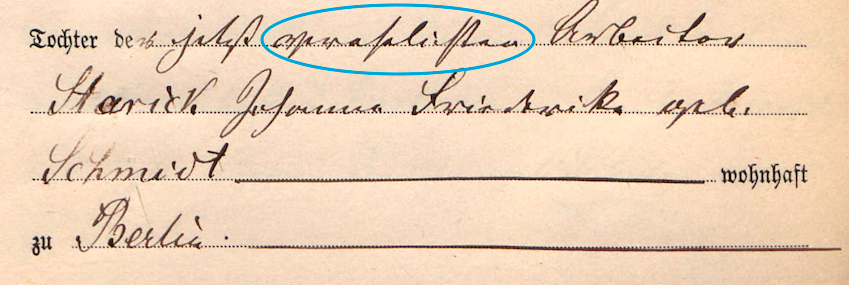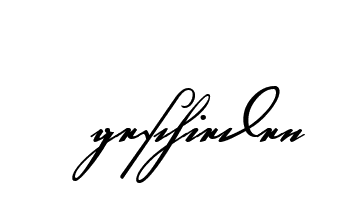Greetings from a beautiful, snow-dusted mountain in southern Austria. In the last weeks, I have been diligently working my way through Katherine Schober’s fantastic online course Reading the old German Handwriting. And in getting started with my new skills, a journey of one word ended up taking me around the world. Here is my story.
HELLO KURRENTSCHRIFT!
When someone discovers Kurrentschrift (the old German handwriting) for the first time they would be hard pressed to be anything but perplexed.
“You’re telling me, THAT letter is an ‘e’?”

A Little About Me:
To give you my background: I am an Aussie living in Austria, married to an Austrian who himself has a Slovene father and a Croatian mother!
It was my husband Bernie’s fascinating history that inspired us to delve into genealogy and family history research and over time that led to the creation of our website Project Ancestry.
As explained in the German handwriting course, Kurrentschrift was used throughout the entire German-speaking realm, and it was while researching Bernie’s Slovene ancestors that I first came across this baffling (yet somehow beautiful) form of handwriting.
So what’s the best way to improve any new skill? Practice!
THE JOURNEY OF ONE GERMAN WORD
My mum in Australia (who has avidly toiled over our own family tree over the last twenty years) was uber excited to find out that I am learning the Kurrentschrift. So much so, that she didn’t waste any time recommending my (cough-cough) amazing new-found translation skills…. to a distant relative in Canada!
The next thing I knew, I had an 1885 civil marriage record from Berlin in my inbox, along with the question:
“Are you able to decipher the words between – Tochter der …….. ……. worker?” (daughter of the… worker)

A MISSION FORMED
Bernie is a native German speaker (which helps immensely) and he could clearly see that ‘jetzt’ (meaning now) comes after the word ‘der’.
“The daughter of the now…..”
But what comes next? We did have one clue! The word most likely describes what comes directly after it, Arbeiter – worker.
And so, armed with the key of the Kurrentschrift letters, Bernie and I attempted several different possibilities:
“verstorbene” – deceased
“pensioniert” – retired
“geschieden” – divorced
“arbeitslos” – unemployed
None of those words fit.

The first letter of the word had us completely stumped as, to our eyes, it bears little resemblance to any of the Kurrentschrift letters.
We tried different methods:
a) Entering potential words into the online script generator deutsche-handschrift.de.
b) Comparing the letters to others written within the document.
c) Enlarging the letters by zooming in the computer screen (this only makes it harder).
We were none the wiser. A new tactic was required

We decided to send it to our clever German friend Ralf in Adelaide, Australia.
Nope, Ralf had no clue either.
So Ralf sent it on to his father Ernst, in Germany, who evidently ‘loves a good challenge’.
Nope, Ernst had no clue either.
Ernst then sent it on to his aunt (she is well into her 90’s) as she had learnt Kurrentschrift as a child!
SO WHAT WAS THE WORD?
We believe the word is “verehelichten” which is an older spelling of “veheiratet”, meaning married. (Genealogy Translator Katherine Schober: Yes, that is correct!)
So if you look back up at the extract from the document, the complete sentence would be:
“Tochter der jetzt verehelichten Arbeiter Starick Johanna Friederike”
“Daughter of the now married worker Starick Johanna Friederike …”
Mystery solved.
We forwarded the solution to my mum in Australia, who then sent it back over to Magarethe in Canada, who in the mean time had also sent it to a friend in Germany for investigation!

SUCCESS
It took seven (very determined) people from four countries BUT we finally had an answer!
The moral of the story?
Use your network. Oh, and never give up on a good challenge!
Can you imagine the registry office employee from 1885, not knowing that some 135 years later, just one word they had written would have so many people interacting?
I think it’s amazing.
About the Author

Narelle (Nelly) and her husband Bernie Kukowetz are the founders of Project Ancestry.
Project Ancestry is an online platform and growing community for family history and genealogy research. We focus on a unique part of Europe that intersects three beautiful countries which historically have always been intertwined: Austria, Slovenia and Italy (Friuli Venezia Giulia).

3 Responses
Narelle, your blog is excellent, I am very pleased to have been a part of it. Having just started genealogy in April (my COVID project) to having my name in print in a genealogy blog, quite the privilege. I was close in thinking it meant the now married worker, but for the life of me could not think of a German word that would mean that. I wonder if my mother would have been able to decipher it as her cursive writing was different but I could always read what she wrote. This one had me stumped for sure. It really is amazing how many people and how many countries it went to. Thank you for persisting. Greetings from Canada, Margarethe Wilkins
Hello Margarethe! It was an amazing joint effort wasn’t it! You will find that in family history and genealogy, there are always fellow researchers willing to help…all over the world! Katherine has some great resources and ‘insider’ tips here on the website so be sure to have a look around! Happy researching!
Hello Narelle,
Yes, I have found out very quickly that asking others has sometimes given me the little piece I was missing to put the puzzle together. That is how I finally could put together our Australian connection on the Stadus tree. It has opened up a whole new family branch that is much larger than I anticipated. I will be sure to check out Katherine’s resources. Thank you again, Stay safe